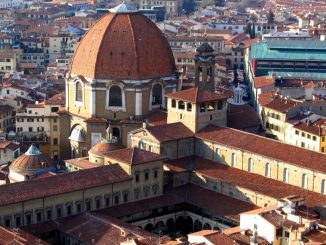Warsaw began life as a humble fishing village but during the late 1300s it started to develop and continued to do so until it was made the capital city of Mazovia in the early 15th century. In the late 16th century it became the medieval capital city of Poland. In the mid 1600s Warsaw was attacked by armies who arrived from Sweden, Transylvania and Brandenburg, resulting in the eventual carving up of Poland amongst Russia, Prussia and Austria in the late 1700s. In the early 19th century Warsaw was reinstated as the Polish Kingdom’s capital city, although it was still ruled from a distance by Imperial Russia. Subsequently the capital developed and grew as centres of learning, transport networks, roads and essential infrastructure such as a sewerage system came into being to cater for the burgeoning population. When Poland became an independent country in the early 20th century the city retained its status as capital.
The Nazis forcibly entered the city shortly after the start of World War II. The inhabitants tried to revolt twice in subsequent years, but these were both in vain, resulting in the deaths of over 500,000. 1943 was the year of the Warsaw Ghetto Uprising, when the Nazis laid siege to what remained of the Jewish population. After a month the Ghetto was razed, along with much of the city such as the Royal Castle. In 1944 the Warsaw Uprising occurred when the Polish Home Army, aiming to gain freedom for the city, resisted against the Nazis. So called Soviet liberators were approaching, but the civilians did not trust them as they were co-conspirators with the Nazis when they initially entered the country.
When the city finally surrendered, the Germans left much destruction in their wake, breaching the terms of the surrender treaty. Only about 15% of Warsaw survived the Germans’ vengeance to punish the population for their resistance – 64 out of 987 culturally significant structures remained after they had claimed their revenge. Hundreds of thousands of Polish people were sent to concentration camps and countless thousands of others left the country in unknown circumstances. Early on, about 60,000 inhabitants of Wola were slaughtered.
After the War ended, Warsaw was no longer the glorious city it had been, but the indomitable Polish spirit lived on. The city was immediately sent into regeneration mode by the Stalinist regime, who built many plain grey apartment blocks in the suburbs and restored many places of worship, palaces, roads and museums. One of the reminders of this time is the huge Palace of Culture (palac kultury), which to this day is the tallest building in the city. UNESCO added the Old Town to its World Heritage list as it was now the main home of the last remaining pre-war monuments and buildings. In 2004, when Poland became a member of the EU, Warsaw quickly became a centre of excellence for tourism and commerce.
Warsaw has changed hugely in the last decade. As more jobs are available here than anywhere else in the country, a large people who live here were not born here or are the children of people who moved here. The city retains its own unique cultural quirks, such as the very well attended mleczny (literally translated as milk bar), a souvenir from the communist years. Basically they are thrifty and cheerful, no nonsense eateries where you can find traditional Polish food. A new National Stadium has been built in preparation for the Euro 2012 football championships.




